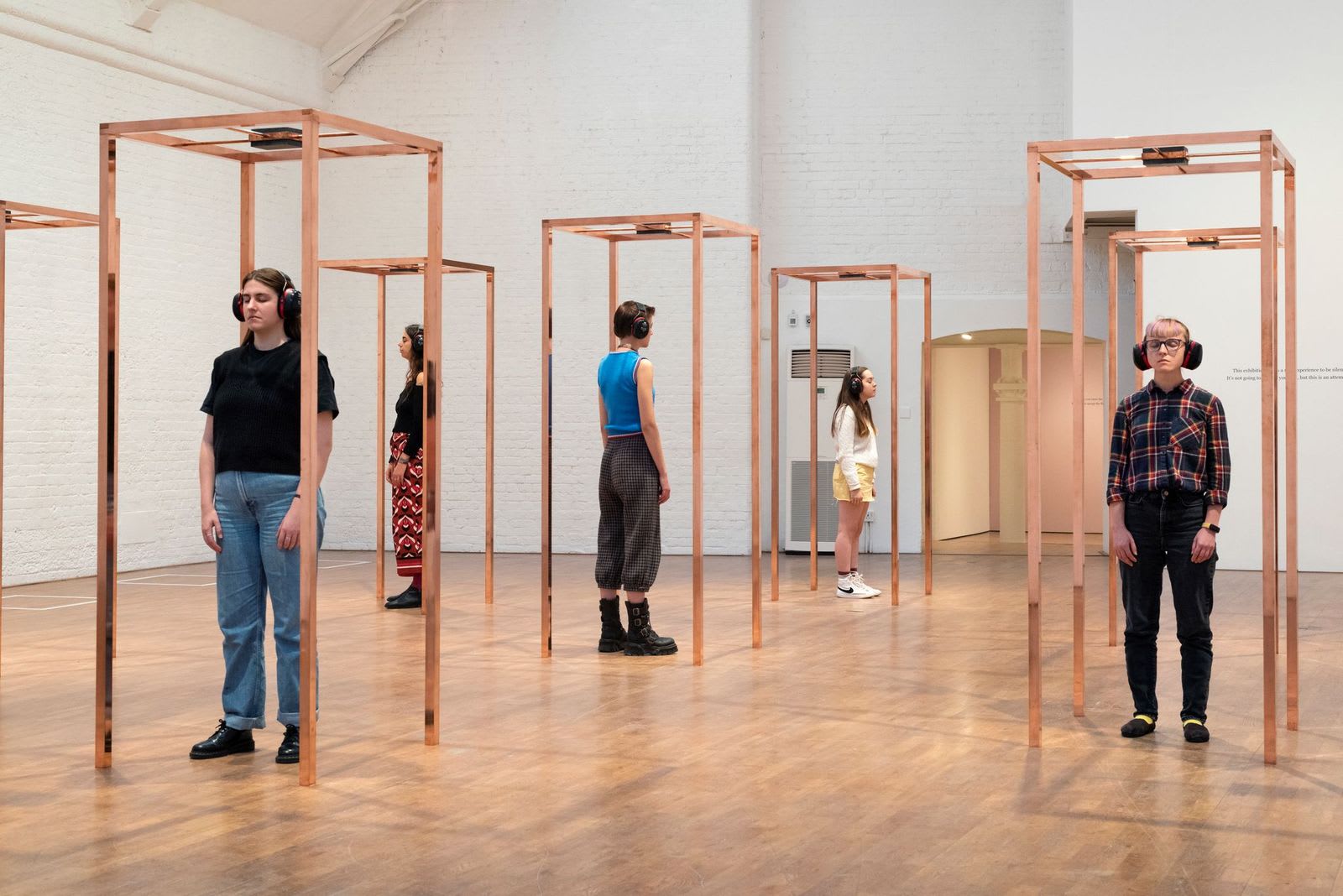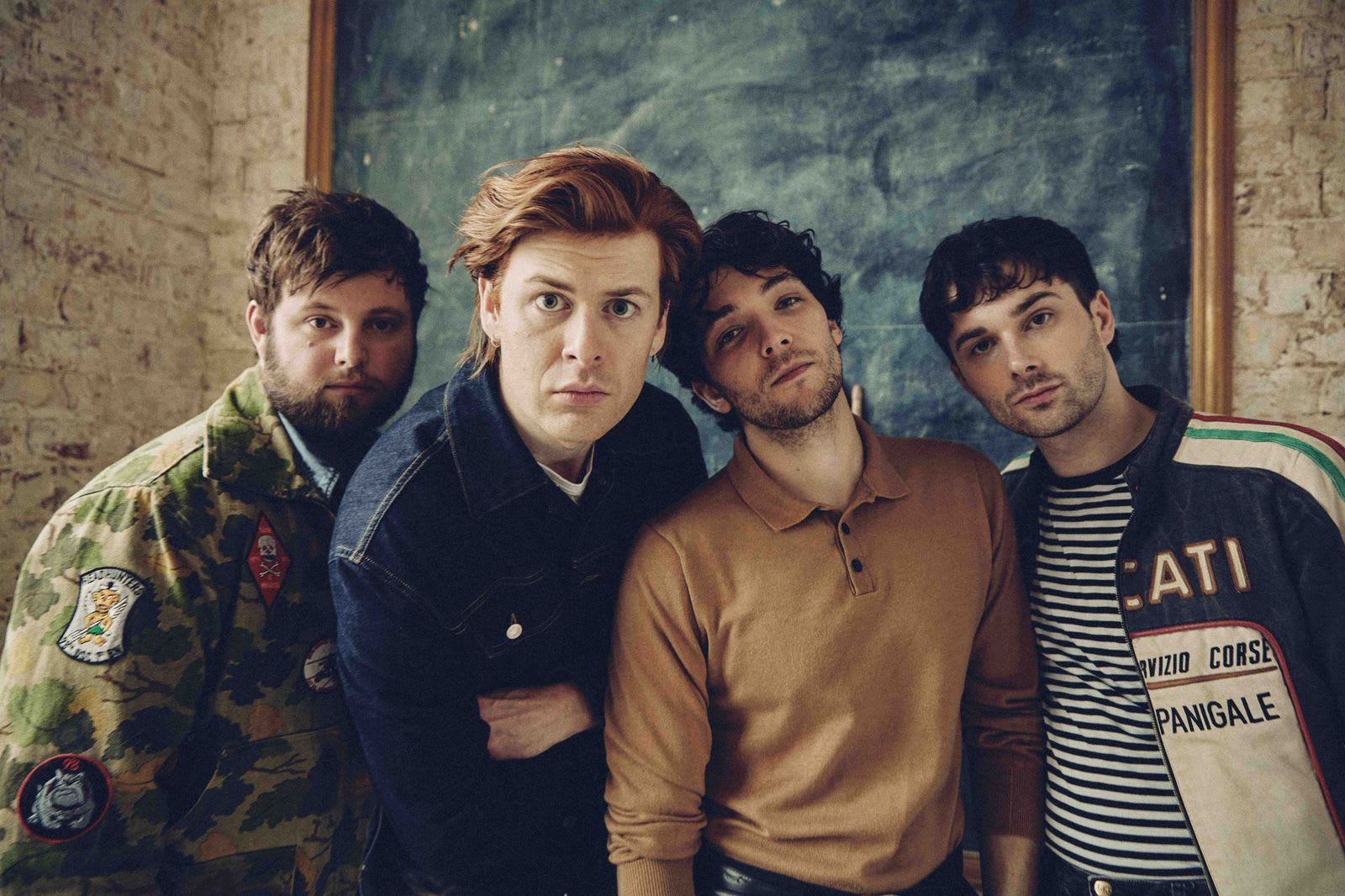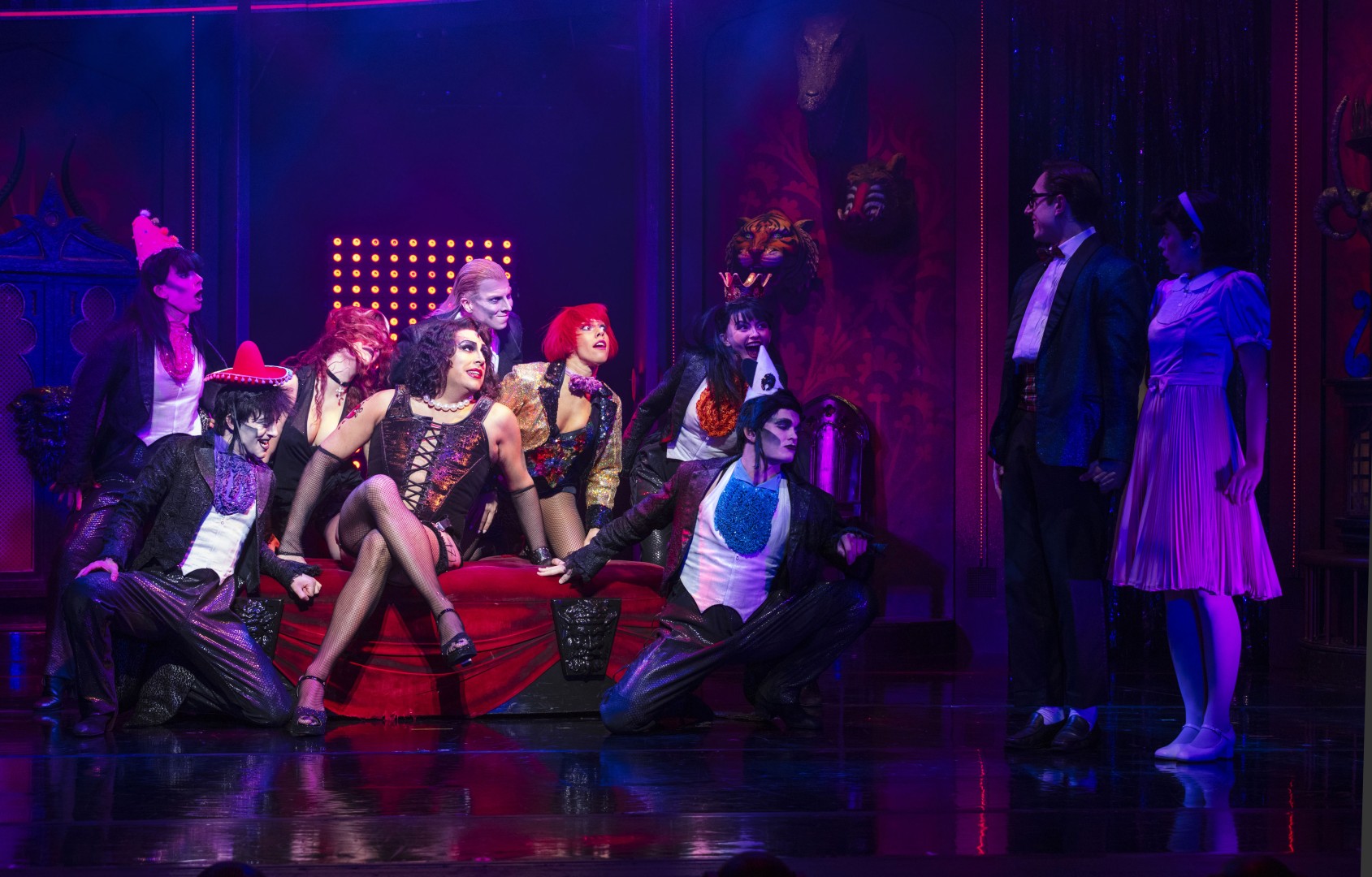World-renowned conceptual and performance artist Marina Abramović is back in Oxford with her new exhibition, Gates and Portals – a sensory deprivation experience exploring bodily awareness and allowing the participant to be the subject of the art. I spoke to Emma Ridgway, Chief Curator and Head of Exhibitions and Learning to find out more.
What can you tell us about the exhibition?
So, the exhibition is called Gates and Portals and is by Marina Abramović who is one of the best-known contemporary artists in the world, and certainly the best-known artist for her conceptual performance work. This exhibition is born out of her interest of how we move into different spatial awareness; so that involves gates – as she would describe it – which can be physical structures like the artworks in the space, but can also refer to one’s own body moving from one state of awareness to another. The portal, for Marina, describes being in a different state, what she would call a higher level of self-consciousness. It’s not that the exhibition guarantees that, but it’s an invitation to present these different things that she's learnt and invite other people in to reflect on this different way of being.
This exhibition draws on decades of her research into spirituality and different forms of performance work, but it was also informed by research she did as part of an Artist Residency last summer here in Oxford in which she spent three weeks at the Pitt Rivers Museum.
How have visitors responded?
We've had a lot of positive responses; people have found it a very calming experience because it’s very different to most exhibitions. The focus is entirely on the visitor and what their experience is, and a lot of people have found that really unusual and quite calming. A lot of people have said they will come back to try it again. Some people have found it doesn't suit them and that being asked to be the subject of the work has been uncomfortable. They haven't been able to get in that state, but we've had more positive feedback than not.
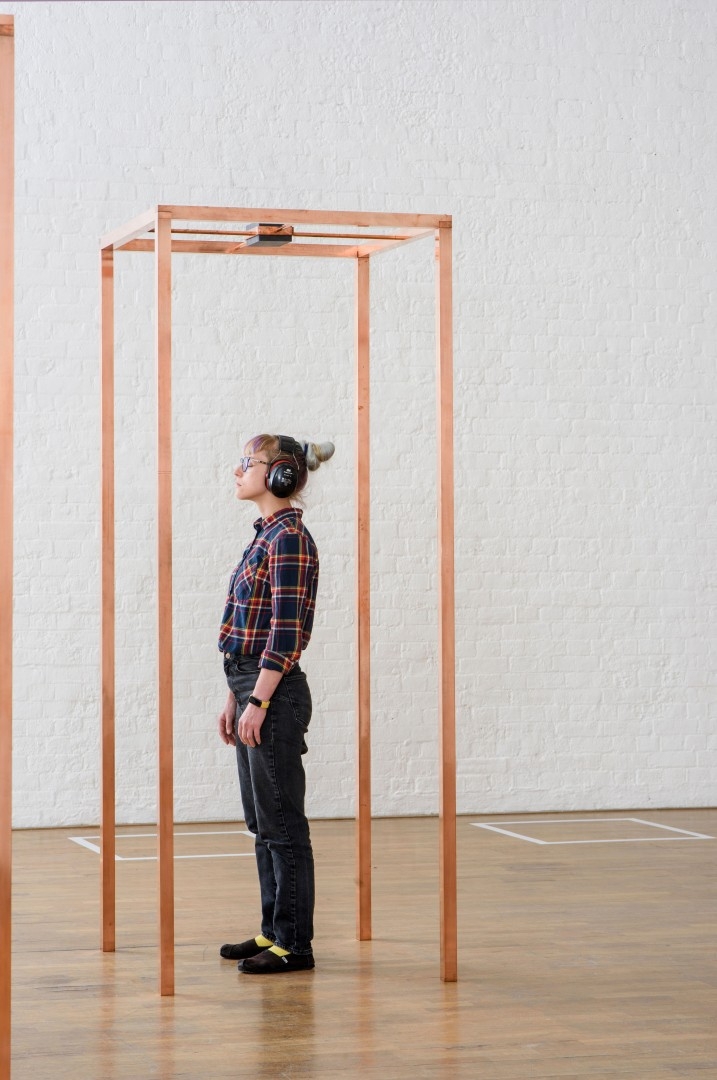
Was that discomfort anticipated?
You always anticipate that with any experimental exhibition or anything a bit unusual, different, or unconventional. To encourage people to be less self-conscious but more self-aware (if that difference makes sense) Marina asks that people leave their watches and phones and distractions of the outside world in lockers before coming in so they’re already in a different kind of mode than we are in our day-to day-busy lives. There is also a private message sent by email before attendance to encourage their understanding. As with any project, it’s up to the individual as to how they respond to it. You may come on one day and find it incredibly transformative and you may come on another and just find it calming – we have different moods and states. Generally, people have found it very calming and compelling.
When you enter the exhibition space, Abramović says that you have to accept whatever happens. If you’re not in a good headspace and react badly, should you embrace that as an opportunity to approach these feelings?
It’s a case of noticing that feeling, and that idea of acceptance very much draws on ideas from Buddhism. It’s about being aware, trusting the experience of things and trusting yourself – it’s not supposed to be a comfortable show. When you lie down there are no nice squishy yoga mats or anything. If things do come up for you, you must try to let go of judgment because judgement relates to our ego needs. The idea in Buddhism is that there are ego-driven stories we tell ourselves, and if we can learn to let go of that judgement of ourselves, we reach a level of freedom that we came into the world with.
I found it particularly difficult not to be able to check my watch, you lose a feeling of control over the time.
I found that too, it’s a curious thing that you start to notice what your habits of mind are or little fidgets like that. You hand over the responsibility of time to the facilitators essentially, and they slow things right down at the very beginning by moving you through the space at a slow pace so it’s very much a relationship of trust that you build up as you go through. I found it very difficult to tell quantitative time as well, though. I thought I was in for a far shorter amount of time than I was.
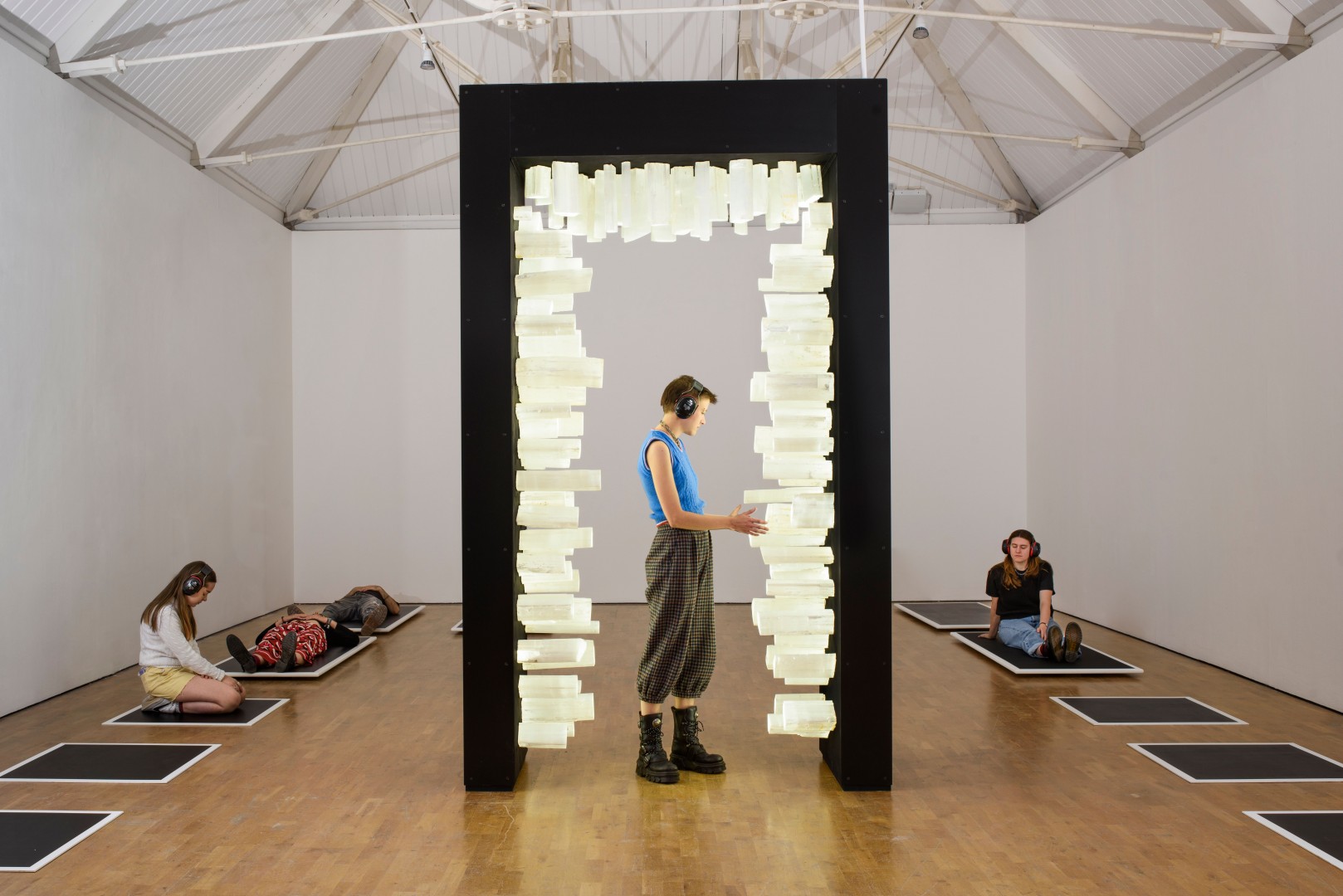
Moving onto the materials used, what was the significance of the gates being made from copper and the portal, crystals?
So, the gates that you come across at the beginning are titled ‘time energisers’ which is a fantastic title. These are slim tall towers of copper, and copper is known for its conductive properties of electrical energy and other things. At the top of the copper tower there are these heavy magnets which are held in place by the very forces of the earth. One is held in place by gravity – resting on two tiny points – but it would fall if there wasn’t a second big magnet underneath, held by magnetic energy; they balance each other perfectly. The copper is known for slowing down magnetic movement so everything balances out. Those pieces work with the very elemental, fascinating physical properties of the materials. As well as that, they’re very much about our body in relation to the body of the earth and what that is made up of.
The portal is mainly made of long selenite crystals which are fantastic at transmitting light. That transition is marked by moving from a darkened state into a very light, bright, and energising space. When I was asking Marina about the choice of materials, she said she hasn't used lots of selenite before, but became really fascinated with the materiality of the earth when she was doing a performance piece (walking the Great Wall of China in 1988). In doing that physical and psychological journey, she really noticed her feet and body in contact different materials of the earth.
What is your definition of art?
There are multiple ways to define art but for me, as someone who's been in art as a profession since university, I would say it is something that is created with the deliberate intention of people encountering it as an aesthetic experience. It is something created in order for other people to engage and explore where that perspective and ideas are coming from, prompting reflection, and ideally shedding some light on the wider context or insight.
Gates and Portals is at MOMA until 5 March.
Wondering whether it's right for you? My honest answer is you don’t know until you try.
I’m quite an anxious person prone to overthinking, and I’m also not the most tactile, so when I was told I’d be guided around a room by a stranger holding my hand while I was blindfolded with ear defenders on, I regretted many of the life choices that led me to that moment. Bizarrely though, I’d still recommend it – I felt a calmness once I got into it, but also appreciated the value of the uncomfortability.
I knew relatively little about the exhibition, only that Abramović is known for her experimental and perhaps even controversial performance art, but I didn’t expect the experience to be as far away from your standard art exhibition as it was.
I wouldn’t say I felt cleansed, or free from personal judgement following my participation, but then I was given the disclaimer that this wasn’t supposed to change my life. It’s certainly made me consider the importance of letting your mind be free and made me contemplate why I find that an issue.
I would advise you to consider before participating whether this is something you might react badly to. I think you have to be in a good headspace for it to be a completely positive experience. At the same time though, don’t be put off easily, it might be more your thing than you think – it was for me.
Photography by Thierry Bal

